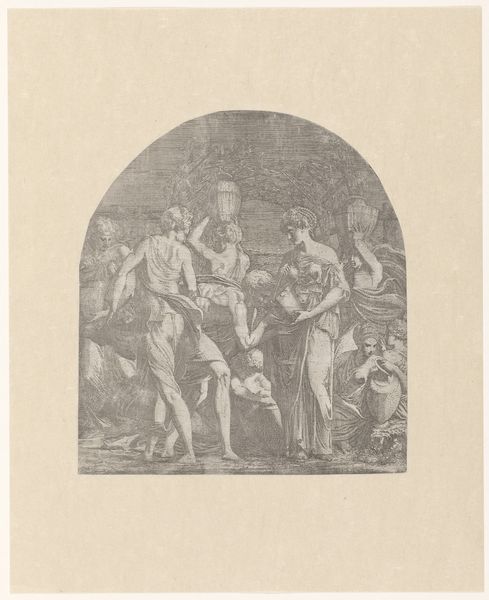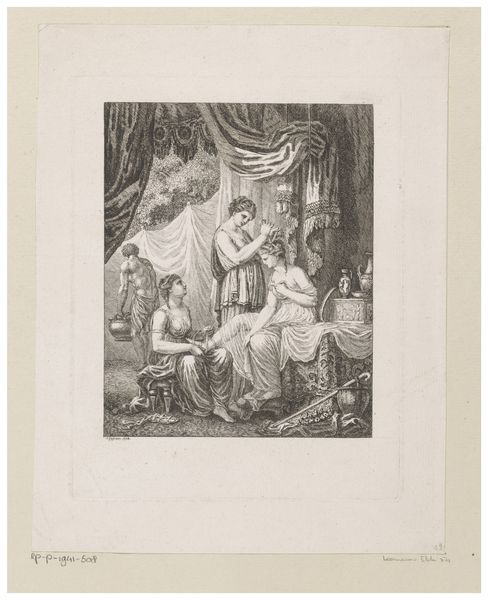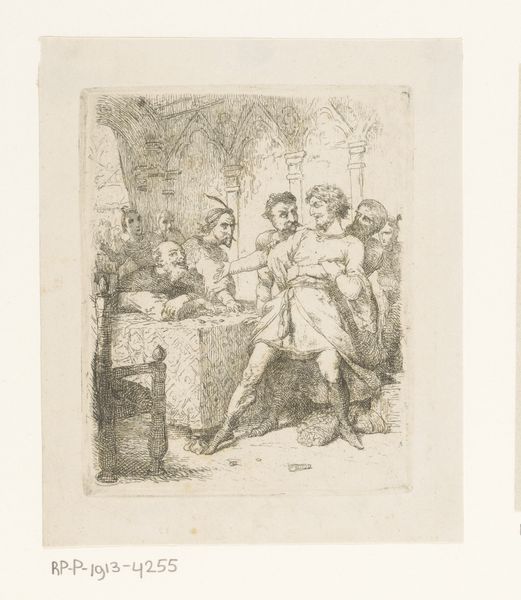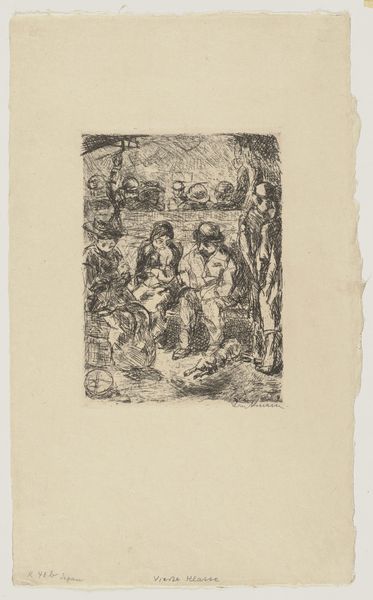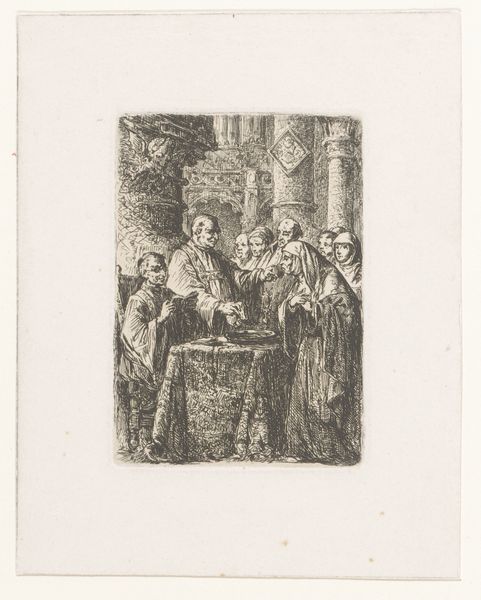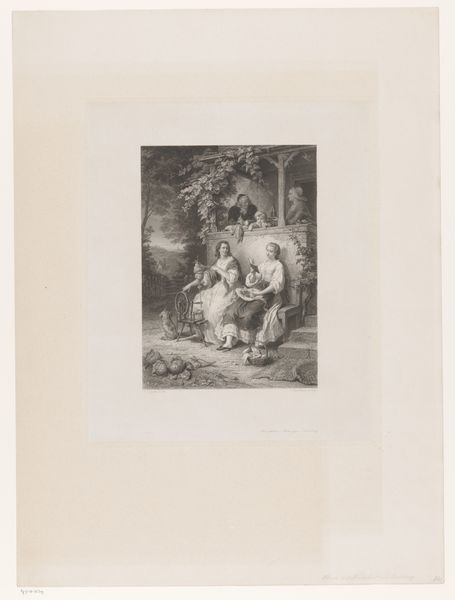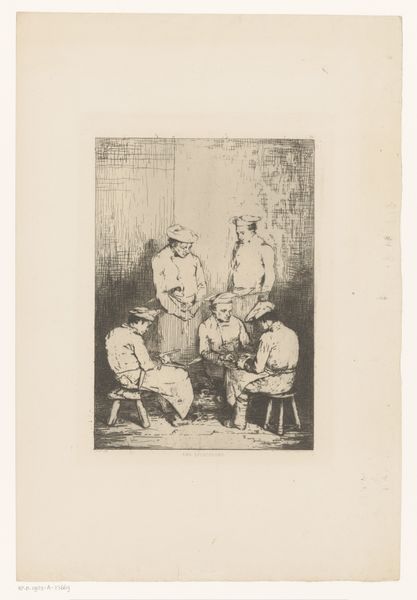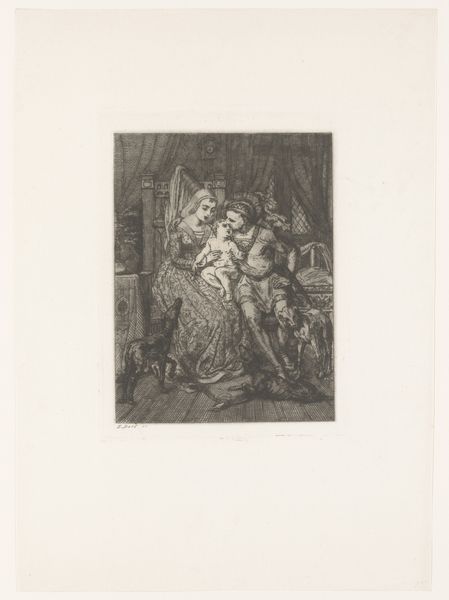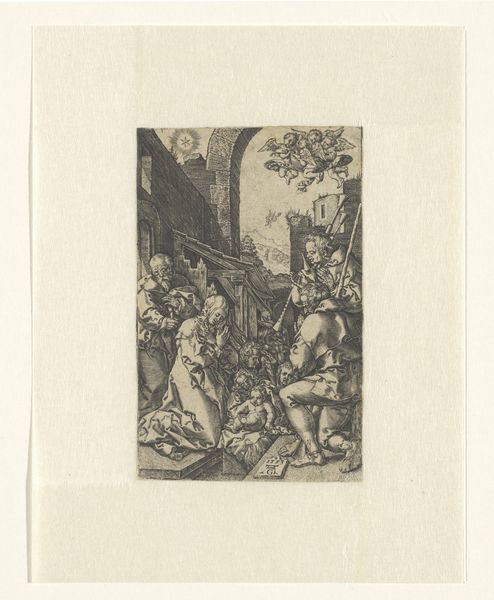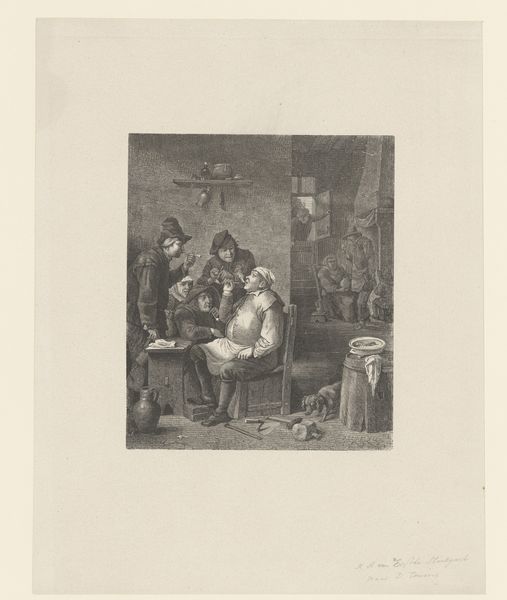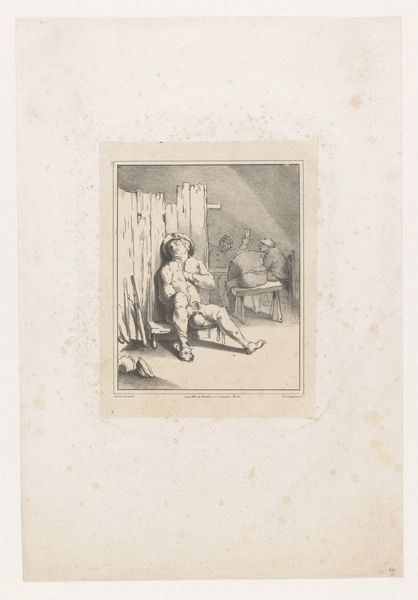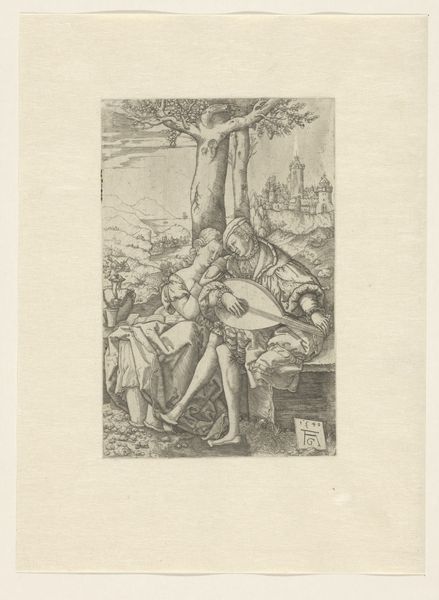
Dimensions: height 188 mm, width 150 mm
Copyright: Rijks Museum: Open Domain
Salomon Gessner made this print, Amor Visits Bacchus and his Entourage, using etching, a printmaking technique, in the 18th century. Etching involves covering a metal plate with a waxy, acid-resistant layer, then scratching lines into it with a needle. The plate is then submerged in acid, which bites into the exposed metal, creating grooves. Ink is applied to these grooves and the surface wiped clean, then the image is transferred to paper under high pressure. Consider the social context of printmaking at the time. It was a process that enabled the widespread distribution of images, reflecting an increasingly information-rich society and the growth of visual culture. This method allowed for the mass production of images, which democratized art, making it available to a wider audience. It's easy to see the incredible amount of labor involved in creating this image, and the skill required for the artist to manipulate the etching process, to convey light, shadow, and texture. Ultimately, the print serves as a reminder that art is not just about the image, but about the materials, techniques, and the wider cultural context that brought it into being.
Comments
No comments
Be the first to comment and join the conversation on the ultimate creative platform.
